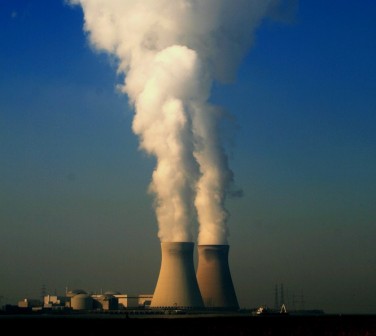Reflecting on the suggestion of Izumi Aizu, a colleague and friend extremely active in Internet circles in Japan, that officials and others in Japan are looking for ideas and strategies for ways, forward a small email list was pulled together including individuals with links into many of the services and functions supporting grassroots ICT responses to physical (and man-made) disasters around the world—including Hurricane Katrina, the 2005 Tsunami, the wide spread violence associated with the 2008 Kenyan election and so on. This had the effect of making me think a lot about the emergency post-earthquake post-tsunami intra-nuclear situation in Japan from the perspective of community based ICTs. Given the scale of the interlocking catastrophes on the ground clearly officials and official structures are unable to fully cope—partly because of compounding infrastructure breakdowns (lack of power, means no water, means no cooling, means possible melt down; loss of roads/bridges makes repairing local infrastructure (such as power supply) and facilitating access to outside resources and for outside resource providers that much more difficult; loss of cell towers, means loss of communications capability in the affected area, which impacts coordination and morale of people on the ground; and so on and so on.
One additional confounding issue is that Japan is an advanced industrial society with the infrastructure of such (more complex, more interconnected) and the expectations for such on the part of the population (and the related lack of local resources, skills etc. to respond to a break down in those facilities (Sri Lankans for example, often have power outages so they have figured out how to deal with them when they regularly occur and so on…
Similarly where in Less Developed Countries (LDC’s) skilled human and technical resources are limited and are often something that is in immediate short supply (and thus providing an immediate focus for aid providers both NGO and official) in an advanced society like Japan there is much much less need for this and much of the supporting technical infrastructure is already in place (the various computer languages/modules/functionalities are already available locally in the appropriate language and with local support resources. for example).
However, this doesn’t necessarily make responding to the emergency on the ground either in the specific case of Japan or more generally for (possible) similar situations in other developed countries (DC’s) that much easier, although it does make it different.
Technically advanced societies are by their very nature complex, specialized, and relatively highly structured—that’s how they came to be technically advanced societies and how they maintain themselves and develop in and from that status. However, when technically advanced societies suffer a shock and disruption such as that which has occurred in Japan now, problems remain but they are acute if hopefully only temporary.
1. complex societies are complex which means that putting them back together even to a minimal level of operation is a complex task requiring multiple skills and multiple jurisdictions/authorities/decision making processes and so on. The administrative/political task of responding in an advanced society is necessarily (and restrictively more complex) and thus likely to be slower and less flexible.
2. managing this complexity is itself a highly complex task and given that such occurrences in advanced societies have been so rare there is no single authority which is clearly and widely recognized as being in a position either jurisdictionally or operationally to respond quickly, efficiently and effectively
3. complex societies are ones that where the various supporting and other systems are highly integrated and interlocking—-so a breakdown in one system may often mean a breakdown in others and this has a tendency to cascade from and through systems both geographically and functionally. Rebuilding within such an environment may mean working inwards through each of the interlocking systems or perhaps finding the key ones to respond to, but these will vary depending on the particular perspective of those in charge – whether to get the electricity supply going first or making sure the waterworks can be made operational or reconstructing roads and so on. This process is time consuming, ethically difficult (which set of needs/needy to respond to first), and to a considerable degree “political” (which set of “interests” (political, commercial, geographic etc.) to respond to or support).
4. and all this gets to the fact that the scale of the response and rebuilding required is such that no central bodies will in fact be able to act effectively in a sufficiently timely fashion and local mobilization is almost certainly required in many many parts of the system. However, since systems in advanced societies have optimized for efficiency rather than for effectiveness, resiliency or (least of all) for enabling local response; it is very very difficult to organize or facilitate these local responses except as they might emerge locally and for the most part spontaneously. Even coordinating these responses may be difficult since there is unlikely to be common reference points or access points from which such coordination might be facilitated.
5. perhaps of equal or even more importance is that the mental models operative among authorities in developed societies is one that is built on an expectation of complexity, specialization, concentration of skills and so on. Thus looking to central authorities to facilitate local developments is quite difficult since they have little understanding of the processes involved in facilitating these kinds of developments at the local/grassroots level in the absence of an over-arching administrative structure.
6. equally while the range of skills required to undertake an effective response (from a community ICT perspective) may be available, accessing those skills may prove to be beyond the skills available at the required level. Conventionally linking into resources is done through official and specialized processes and local authorities don’t generally have experience in communicating with non-institutional based “hackers” or “geeks”. As well, coordinating those skills may prove beyond local skill levels since while the needs are local there is little capacity to undertake this kind of specialized needs assessment at the local level. As well, there are few existing means even at the best of times to transmit these onwards towards any type of aggregation for bottom up efficiencies of scale.
7. the ultimate challenge in advanced societies in these areas is how to in fact empower those at the local level to act in their own behalf and to ensure that those at a higher level are able and willing to enable that local empowerment. Also, it is to ensure that existing administrative systems undertake their most significant responsibility in a situation such as this which is coordination laterally and aggregation and integration upwards. Getting the power on and water working locally is perhaps best undertaken locally—linking these into larger power grids and water sources is the role of regional and higher level civic authorities.
One possible way of responding quickly would be to begin to enlist those who at least generationally can bridge these gaps. Mobilizing senior high school, college and university students to begin to work with local resources may be one way of starting these processes working. The local authorities would have ready access to them through institutional means and the students in turn would be able to start working locally in their own communities to link into local resources and skills (with appropriate direction and enablement from local authorities and teachers/mentors).
A Japanese colleague pointed as well to the vast areas and differences in access because of the specific location of the devastation in Japan. What he pointed to are the possible breaks in the transport/logistical connections linking regions and particularly somewhat more isolated or sparsely populated regions and the need to fill in those logistical “black spots” as a matter of priority to link the more isolated regions back into national grids of various kinds. This holds as well for difficulties in lateral (or vertical communication) when certain of the links in the communication chain have been physically put out of action.
This again points to the “brittleness” of systems in developed countries as compared to LDC’s where in the latter there is rather more experience with (and expectation of) the failure of one or more links in vertical and horizontal communications, administrative or logistical chains. In the LDC situation in critical contexts there would likely be some type of redundancies built into the system alongside one or another already developed work around that could be put in place if/where/when required. In Developed Countries where there is the expectation that logistical chains will (always) be in place there is much less resiliency and parallel systems already in place.
One hesitation that occurred to me in the course of these reflections was that those at the receiving end, are overwhelmed with urgent issues that they need to deal with and most likely have little or no experience with planning for ICT deployment. How are those folks to sort through the options, figure out which is best for them, sort out the real stuff from the hucksters and then implement, when in many/most instances the systems that they are looking to implement may be in a foreign language with few native speaking experts.
It is relatively easy for companies like IBM or Google to fund and support projects like Sahana–it isn’t a great stretch from what they are already doing (and not to take anything away from either Sahana Google, or IBM on this) but the challenge really is on the user end in being able to effectively implement these systems at the local level under conditions of emergency and resource interruption. Again this is different between Developed Countries (DC) and LDC’s. In LDC’s the local human and technical infrastructure is likely so weak (again say as in Sri Lanka) that the folks from the outside can essentially treat the local context as a “greenfield” site and move their own solution in holus bolus–hardware, software, communications infrastructure, training, even operational personnel. In a DC the situation is more or less completely different. Even where the local infrastructure has been completely destroyed the human and administrative (corporate and political) infrastructure of which it was a part remains more or less intact and has to be accommodated/integrated/made provision for in whatever solution is arrived at/offered. In this latter instance there are existing rivalries, political conflicts, commercial interests etc.etc. that need to be dealt with in one way or another and in this outsiders really need to stay outside and be guided by insiders but where the insiders may be operating on instinct and without a road map.
One final point is that there isn’t much planning (or expectation) that a location/town would be completely destroyed i.e. with little or no remaining physical or administrative infrastructure as has happened in Japan and as is possible in a major catastrophe elsewhere as well. Again in LDC’s (thinking about the situation in Sri Lanka for example) when that happened there were more traditional family, religious, informal associated rural village structures to fall back on to a degree–this seems to a degree available in Japan given Japan`s homogeneity and fairly recent history of significant adversity (but much less likely in most developed countries) and would suggest the need for very extensive local support structure redundancy… This is where Steve Clift’s neighbourhood structures and using Facebook links as a support might come in very handy as a substitute for “village” connections. I understand that Internet access remained available in virtually all places but that cell phones and other telecommunications were down for some time… (I’m not sure how that might work technically… But if so, then it would suggest that some type of quick response “telecentre” establishment team (telecentre in a box or in a cube/van) might make a lot of sense both for providing Internet access but also as way of creating a community focal point for people to gather to exchange information, establish connections, begin to organize self-help etc. etc. Having some sort of trained community based facilitation linked to the telecentres might also be very useful even very early to help people to re-establish community processes even in advance of putting admin structures back in place which might help people psychologically as well.
One thought/question… Since so many people have been put out of their homes or have homes without electricity and cell systems seem to be down, would it be useful to think about having the pre-prepared means for setting up community public Internet access points where people can get and share information perhaps facilitated in their information searching by volunteers (Information Studies students?). This could be a service done through municipal governments and perhaps facilitated technically by ICT students from universities in the affected or adjacent areas?
I’m not sure where to go with this. My suggestion to places like Vancouver/San Fran/LA is that they really should be watching what is going extremely closely and realistically – that is what is actually happening on the ground and not simply focusing on how various of the systems with which they are familiar (for example emergency response systems) are operating. That is, centrally administered top down emergency response systems have their uses but clearly in a situation such as has happened in Japan, alternative and bottom up ICT systems are also necessary and should be planned for alongside medical care, water supply, etc.etc.









